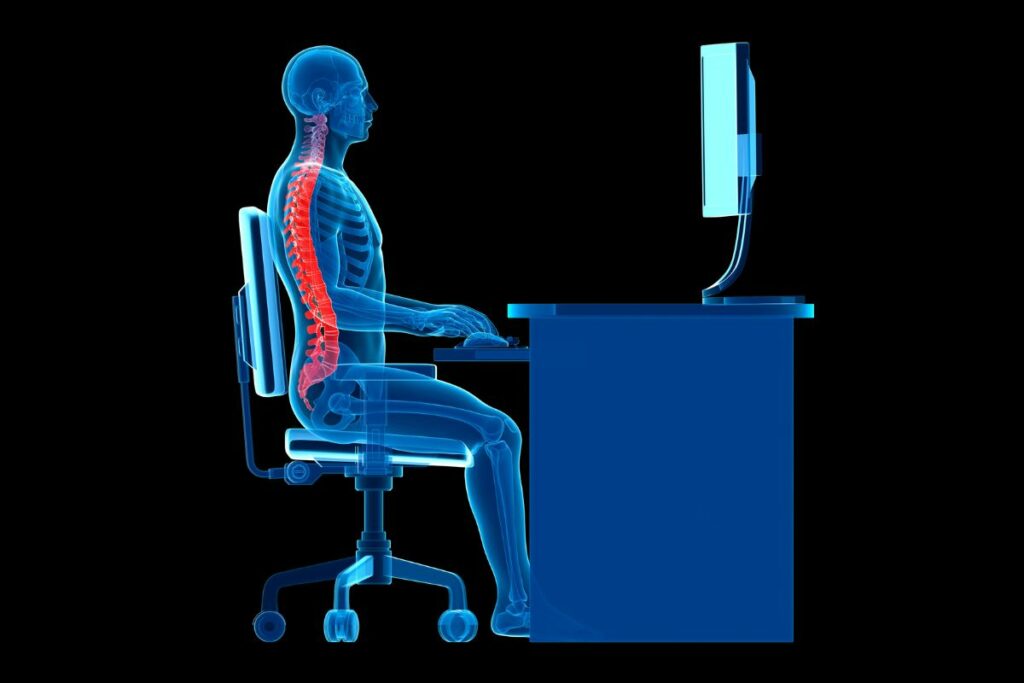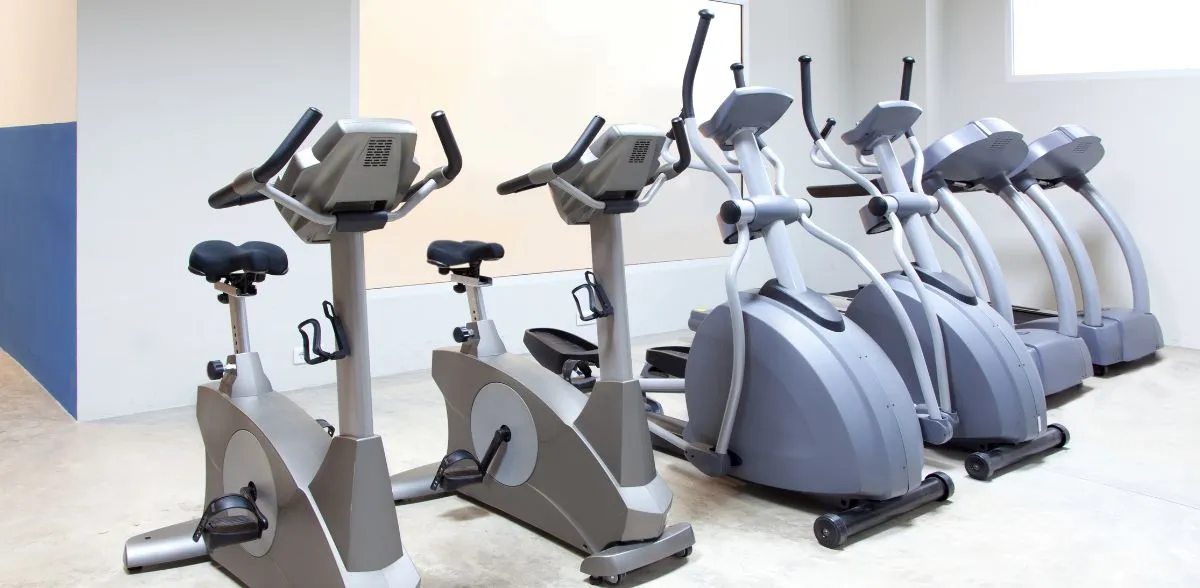
Our daily work schedules require us to sit in front of a desk or computer for eight to nine hours. But we don’t realize how seriously poor posture compromises our health. Studies have shown that when poor sitting posture is maintained at your desk, you may suffer from rounded shoulders, potbellies, muscle fatigue, headaches, and other body aches.
Thus in this blog, we will talk about proper sitting posture at the computer.
Best practices for sitting posture at a computer desk
The study of workplace ergonomics has greatly improved our understanding of proper sitting posture in recent years. Following are some tips that will help you maintain the correct sitting position-
Sit up straight -Lie in the chair and push your hips back as far as possible. Adjusting the seat’s height ensures your feet are touching the ground. Closely notice that your chair is reclined at an angle of 100°-110°.
Maintain a healthy spine by supporting the lower and upper backs. Small pillows or inflatable cushions can be used if necessary. Since your chair allows you to adjust the back angle, you should switch positions often. Put the armrests where they won’t strain your shoulders, or take them off entirely if they’re too much of a nuisance
Keep your keyboard near you – Put the keyboard at chest level. Make sure that your body is centered over the keys
Raise or lower the keyboard– Straighten your wrists and hands, relax your shoulders, and keep your elbows slightly open.

Make sure your keyboard tilts according to how you sit-It possible to adjust the tilt of the keyboard using the keyboard feet. When sitting upright, tilt your keyboard slightly away from your reach. When sitting slightly reclined, tilt your keyboard slightly forward to keep your wrists straight
Keep your wrists supported– They will be useful for preventing back pain and cushioning uncomfortable areas. Wrist rests are only intended for repositioning hands between your keystrokes.
Monitors should be positioned properly – Make sure your neck is relaxed and neutrally positioned when using the monitor. Directly above your keyboard, place the monitor. To maximize viewing comfort while seated, raise the top of the screen to a height of about 3 to 5″ above eye level. Curtains and blinds should be readjusted if necessary
Schedule frequent breaks– Blood flow can be reduced, and muscles can become fatigued when sitting for long periods. Take frequent breaks to avoid this. Move around your desk instead of sitting down.
It applies to all types of seating, including office chairs, wooden chairs, and kitchen stools
Benefits of proper sitting posture at the computer
Assists muscles using their full potential by properly aligning bones and joints.
- Reduces abnormal joint wear.
- Assists in reducing spinal ligament stress.
- Maintains a normal spinal position.
- Assists in preventing muscle fatigue.
- Protects against overuse injuries, strains, and sprains.
- Enhances self-confidence.
Is it Healthy to Sit Cross-Legged while working on a Computer?
Sitting cross-legged, also known as sitting in a lotus position, is a common posture for activities like meditation, but is it actually healthy to sit this way for extended periods while working on a computer? There are several factors to consider.
Ergonomics
Traditional ergonomics guidance tends to recommend sitting with both feet flat on the floor, knees bent at a 90-120 degree angle, with your back supported by an office chair. This allows for better alignment of the back and neck. Sitting cross-legged often requires more flexion, rotation, or lean of the back and neck to view a computer screen properly.
Let’s compares neutral seated posture to cross-legged seating posture:
| Posture | Back Position | Neck Position |
| Neutral Seat | Natural lumbar curve maintained | Head level, inline with torso |
| Cross-legged | Increased flexion, rotation or lean | More flexion/extension to view screen |
Muscle Strain
Holding your legs crossed requires isometric contraction of muscles like the hip rotators and adductors to maintain that position. Much like standing requires muscle activity to stabilize the body, so does the cross legged posture. This persistent muscle tension can lead to strain over time.
A study in the journal Ergonomics found that sitting for 60-90 minutes with legs crossed led to reports of moderate discomfort and fatigue in the hips and back.
Circulation Issues
Having your legs bent and crossed can also restrict circulation by putting pressure on blood vessels and nerves. This can lead to oxygenation issues in the lower limbs or a sensation of limbs “falling asleep.” Those with pre-existing conditions like sciatica or varicose veins may be more impacted.
Here we present the percentage of sensation issues reported in studies on cross-legged sitting:
| Study | % Reporting Limb Issues |
| Ergonomics Study | 34% |
| Journal of Bodywork Movement Therapies | 41% |
The risks here can increase the longer someone sits in a cross legged posture without regular movement or position changes.
So, based on ergonomic guidelines and early research, sitting for long periods with legs crossed while working on a computer may present disadvantages related to posture, muscle fatigue, and circulation. Those with existing back/neck issues or circulatory conditions could see heightened risks as well.
Tips for Maintaining Correct Sitting Posture
Sitting properly depends on your lifestyle habits and the wider environment. Improve your sitting position by paying attention to the following:
Get up and walk around: Get a standing desk if you spend much time sitting at your desk.
Shapeshifting: Swap between sitting up straight and leaning back in your chair. Develop a habit of doing this once an hour (an alarm would be helpful)
Make sure your shoulders are relaxed: Make sure your shoulders are back, and your shoulder blades are together every few hours to avoid slouching.
Ensure you hydrate: Support your muscles and avoid fatigue by drinking at least two to four liters daily.
Promote blood circulation– Avoid crossing your legs while sitting, which restricts blood flow and leads to slouching.
Take a break from your screen: Look at the farthest thing in your immediate vicinity every hour. This is very important for eye-sight exercise.
These days’ offices aren’t exactly built for employees to get up and move around in, and research shows that sitting for long periods can be bad for your health. Even so, you can greatly benefit your health by working on your posture. Purchasing a few ergonomic tools and training yourself to sit correctly can significantly lessen the strain on your muscles and joints. In the long run, this can help you avoid pain and discomfort from repetitive motions and prevent injuries.
Also read,






